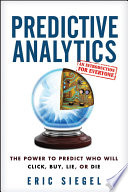

Predictive analytics is a branch of advanced analytics that uses both new and historical data to forecast future events. It employs techniques from data mining, statistics, modeling, machine learning, and artificial intelligence to analyze current data and make predictions about the future. The essence of predictive analytics lies in its ability to identify patterns and trends in data, which can be used to make informed decisions. This idea emphasizes the importance of data quality and relevance, as the accuracy of predictions relies heavily on the data used in the analysis. Furthermore, predictive analytics is not just limited to forecasting; it can also be used for risk assessment, customer segmentation, and operational optimization. Understanding predictive analytics requires a grasp of its methodologies, including regression analysis, time series analysis, and classification techniques, which are fundamental to building predictive models.
Continue readingThe foundation of effective predictive analytics is robust data collection and preparation. This process involves gathering data from various sources, which may include internal databases, external data providers, and real-time data streams. Once collected, the data must be cleaned and transformed to ensure its quality and suitability for analysis. This stage may involve handling missing values, removing duplicates, and normalizing data formats. Additionally, feature engineering plays a crucial role in preparing data for predictive modeling. By creating new variables or modifying existing ones, analysts can enhance the predictive power of their models. The book highlights the significance of understanding the context of the data, as well as the importance of domain knowledge in selecting relevant features that can influence the outcome of predictions.
Continue readingChoosing the right predictive model is critical for achieving accurate results. The book discusses various types of predictive models, including linear regression, decision trees, neural networks, and ensemble methods. Each model has its strengths and weaknesses, and the choice of model often depends on the nature of the data and the specific problem being addressed. The book emphasizes the importance of model validation, which involves testing the model on unseen data to assess its performance. Techniques such as cross-validation and holdout validation are essential to avoid overfitting, where a model performs well on training data but poorly on new data. The author advocates for an iterative approach to model selection, encouraging analysts to experiment with multiple models and refine their approaches based on performance metrics such as accuracy, precision, recall, and F1 score.
Continue readingAfter building predictive models, the next step is to interpret the results and extract actionable insights. This involves translating complex statistical outputs into understandable terms for stakeholders. The book highlights the importance of data visualization techniques, such as charts and graphs, to communicate findings effectively. It also discusses the need for transparency in predictive analytics, ensuring that decision-makers understand how predictions were made and the assumptions underlying the models. This transparency is crucial for building trust in the analytics process, especially in fields such as healthcare and finance, where decisions can have significant consequences. Furthermore, the author emphasizes that predictive analytics should not be viewed as a one-time activity; instead, it should be integrated into the decision-making process to continuously refine strategies based on new data and insights.
Continue readingAs predictive analytics becomes more prevalent, ethical considerations surrounding its use are increasingly important. The book addresses potential biases in data and algorithms, which can lead to unfair or discriminatory outcomes. It stresses the importance of fairness, accountability, and transparency in predictive modeling. Analysts are encouraged to be aware of the ethical implications of their work and to consider the societal impact of their predictions. The author advocates for the establishment of guidelines and best practices to ensure that predictive analytics is used responsibly. This includes conducting fairness audits, ensuring diversity in training data, and engaging stakeholders in discussions about the ethical use of analytics. The book serves as a call to action for practitioners to prioritize ethical considerations in their analytical processes.
Continue readingPredictive analytics has a wide range of applications across various industries, and the book explores several case studies that illustrate its impact. In healthcare, predictive analytics can be used to forecast patient outcomes, optimize treatment plans, and manage resources effectively. In finance, it aids in credit scoring, fraud detection, and risk management. Retailers leverage predictive analytics for inventory management, customer behavior analysis, and personalized marketing strategies. The author discusses the role of predictive analytics in improving operational efficiency, enhancing customer experiences, and driving business growth. By showcasing real-world examples, the book demonstrates how organizations can harness the power of predictive analytics to gain a competitive edge and make data-driven decisions.
Continue readingThe final idea presented in the book revolves around the future of predictive analytics and its evolving landscape. The author discusses emerging trends such as the integration of artificial intelligence and machine learning into predictive modeling, the rise of automated analytics, and the increasing importance of real-time data processing. As technology advances, the accessibility of predictive analytics tools is expected to grow, enabling more organizations to leverage data for decision-making. The book also highlights the need for continuous learning and adaptation in the field, as new methodologies and tools are developed. The author encourages readers to stay informed about advancements in predictive analytics and to embrace a mindset of innovation to remain competitive in a rapidly changing environment.
Continue reading